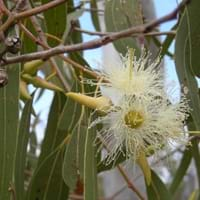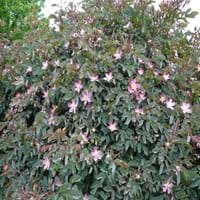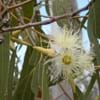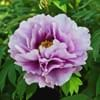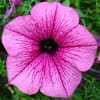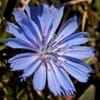Life Span
Perennial
Perennial
Type
Shrubs, Trees
Flowering Plants
Origin
Australia
Central Europe, Polynesia, Southern Europe
Types
Eucalyptus absita, Eucalyptus acies, Eucalyptus calycogona
Not Available
Number of Varieties
Not Available
Habitat
River side
Dappled Shade, Sunny Edge, Woodland Garden
USDA Hardiness Zone
9-10
10-15
Sunset Zone
5, 6, 8, 9, 10, 11, 12, 13, 14, 15, 16, 17, 18, 19, 20, 21, 22, 23, 24
H1, H2, 24
Habit
Oval or Rounded
Arching/Fountain-shaped
Flower Color
Pink, Red, White
Pink
Flower Color Modifier
Not Available
Bicolor
Fruit Color
Yellow Brown
Red
Leaf Color in Spring
Dark Green
Green, Dark Green
Leaf Color in Summer
Gray Green
Purplish Green
Leaf Color in Fall
Gray Green
Copper
Leaf Color in Winter
Gray Green
Blue Green
Plant Season
Winter
Spring, Summer, Fall, Winter
Sunlight
Full Sun
Full Sun, Partial Sun
Type of Soil
Well drained
Loam, Sand
The pH of Soil
Slightly Alkaline
Acidic, Neutral
Soil Drainage
Well drained
Average
Bloom Time
Early Summer, Spring
Early Summer, Summer, Late Summer
Tolerances
Drought
Drought, Salt
Where to Plant?
Ground
Ground, Pot
How to Plant?
Stem Planting
Seedlings, Stem Planting
Plant Maintenance
Medium
Medium
Watering Requirements
Requires regular watering, Requires watering in the growing season, Use and maintain water-efficient soaker hoses, Water Deeply, Water twice a day in the initial period
Requires a lot of watering, Requires regular watering
In Summer
Lots of watering
Lots of watering
In Spring
Moderate
Moderate
In Winter
Average Water
Average Water
Soil pH
Slightly Alkaline
Neutral, Slightly Acidic, Slightly Alkaline
Soil Type
Well drained
Clay, Loam, Sand
Soil Drainage Capacity
Well drained
Well drained
Sun Exposure
Full Sun
Full Sun, Partial Sun
Pruning
Prune for shortening long shoots, Prune if you want to improve plant shape, Prune ocassionally, Remove dead or diseased plant parts
cut main flower spike, Prune in spring, Remove dead leaves, Remove deadheads
Fertilizers
All-Purpose Liquid Fertilizer
5-10-10 fertilizer
Pests and Diseases
Canker, head rot, Mealybugs, Root rot
Aphids, Black Spot, Japanese Beetles, Powdery mildew, Spider mites
Plant Tolerance
Drought
Wet Site
Flowers
Yes
Insignificant
Flower Petal Number
Single
Single
Fragrant Bark/Stem
Yes
No
Foliage Texture
Medium
Bold
Foliage Sheen
Matte
Matte
Allergy
Itchiness, Pain and fatigue, Respiratory problems
Asthma, contact allergic dermatitis, Rhinoconjunctivitis
Aesthetic Uses
Not Used For Aesthetic Purpose
Borders, Bouquets, Showy Purposes
Beauty Benefits
Not Available
good for lips, Improve skin tone, Moisturizing, Speed hair growth
Environmental Uses
Air purification
Air purification
Medicinal Uses
Burns, Cough, Fever, Joint pain, Pulmonary tuberculosis, Upset stomach
anti-inflammatory, Antiseptic, Asthma, Dehydration, Dermatitis, Eczema, Eye Problems, Fatigue, Gallbladder Diseases, Liver problems, Sore throat, Stomach aliments, Swelling, Ulcers, Urinary tract problems
Part of Plant Used
Leaves
Flowers
Other Uses
Oil is used as an industrial solvent, Oil is used in mosquito repellents, Used in paper industry
Can be made into a herbal tea, Cosmetics, Culinary use, Edible syrup, Making Sweet Scented Oil, Oil is used for aromatherapy, Used as essential oil, Used as Ornamental plant, Used for fragrance, Used for its medicinal properties
Used As Indoor Plant
No
Yes
Used As Outdoor Plant
Yes
Yes
Garden Design
Not Available
Bedding Plant, Mixed Border
Botanical Name
Eucalyptus
Rosa glauca
Common Name
Eucalyptus
redleaf rose, red-leaved rose
In Hindi
नीलगिरी
red leaved rose
In German
Eukalyptus
Rotblatt-Rose
In French
Eucalyptus
Rosa glauca
In Spanish
Eucalipto
Rosa glauca
In Greek
ευκάλυπτος
Rosa glauca
In Portuguese
Eucalipto
Róża czerwonawa
In Polish
Eukaliptus
Róża czerwonawa
In Latin
Eucalyptus
Rosa glauca
Phylum
Magnoliophyta
Magnoliophyta
Class
Magnoliopsida
Magnoliopsida
Family
Myrtaceae
Rosaceae
Clade
Not Available
Angiosperms, Eudicots, Rosids
Tribe
Eucalypteae
Not Available
Subfamily
Myrtoideae
Rosoideae
Importance of Eucalyptus and Redleaf Rose
Want to have the most appropriate plant for your garden? You might want to know the importance of Eucalyptus and Redleaf Rose. Basically, these two plants vary in many aspects. Compare Eucalyptus and Redleaf Rose as they differ in many characteristics such as their life, care, benefits, facts, etc. Every gardener must at least have the slightest clue about the plants he wants to plant in his garden. Compare their benefits, which differ in many ways like facts and uses. The medicinal use of Eucalyptus is Burns, Cough, Fever, Joint pain, Pulmonary tuberculosis and Upset stomach whereas of Redleaf Rose is anti-inflammatory, Antiseptic, Asthma, Dehydration, Dermatitis, Eczema, Eye Problems, Fatigue, Gallbladder Diseases, Liver problems, Sore throat, Stomach aliments, Swelling, Ulcers and Urinary tract problems. Eucalyptus has beauty benefits as follows: Not Available while Redleaf Rose has beauty benefits as follows: Not Available.
Compare Facts of Eucalyptus vs Redleaf Rose
How to choose the best garden plant for your garden depending upon its facts? Here garden plant comparison will help you to solve this query. Compare the facts of Eucalyptus vs Redleaf Rose and know which one to choose. As garden plants have benefits and other uses, allergy is also a major drawback of plants for some people. Allergic reactions of Eucalyptus are Itchiness, Pain and fatigue and Respiratory problems whereas of Redleaf Rose have Asthma, contact allergic dermatitis and Rhinoconjunctivitis respectively. Having a fruit bearing plant in your garden can be a plus point of your garden. Eucalyptus has no showy fruits and Redleaf Rose has showy fruits. Also Eucalyptus is flowering and Redleaf Rose is not flowering . You can compare Eucalyptus and Redleaf Rose facts and facts of other plants too.
